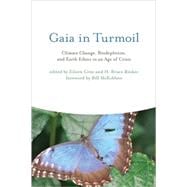
Note: Supplemental materials are not guaranteed with Rental or Used book purchases.
Purchase Benefits
What is included with this book?
| Foreword | p. ix |
| Preface | p. xi |
| Acknowledgments | p. xvii |
| Introductory Essays | |
| One Grand Organic Whole | p. 3 |
| Our Sustainable Retreat | p. 21 |
| The Science of Gaia | |
| How the Biosphere Works | p. 27 |
| Water Gaia | p. 41 |
| Thousand Million Years of Wetness on Planet Earth | |
| Gaia and Evolution | p. 61 |
| Forest Systems and Gaia Theory | p. 85 |
| Imperiled Biosphere | |
| Gaia and Biodiversity | p. 107 |
| Global Warming, Rapid Climate Change, and Renewable Energy Solutions for Gaia | p. 125 |
| Gaia's Freshwater: An Oncoming Crisis | p. 151 |
| Deep Time Lags: Lessons from Pleistocene Ecology | p. 165 |
| Gaian Ethics and Education | |
| From the Land Ethic to the Earth Ethic | p. 177 |
| Aldo Leopold and the Gaia Hypothesis | |
| Principles of Gaian Governance: A Rough Sketch | p. 195 |
| In the Depths of a Breathing Planet | p. 221 |
| Gaia and the Transformation of Experience | |
| Sustainability and an Earth Operating System for Gaia | p. 243 |
| The Gaian Generation | p. 255 |
| A New Approach to Environmental Learning | |
| Gaia Theory | p. 275 |
| Model and Metaphor for the Twenty-first Century | |
| Neocybernetics of Gaia | p. 293 |
| The Emergence of Second-Order Gaia Theory | |
| Intimations of Gaia | p. 315 |
| Afterword | |
| Gaia Going Forward | p. 337 |
| About the Contributors | p. 343 |
| Index | p. 347 |
| Table of Contents provided by Publisher. All Rights Reserved. |
The New copy of this book will include any supplemental materials advertised. Please check the title of the book to determine if it should include any access cards, study guides, lab manuals, CDs, etc.
The Used, Rental and eBook copies of this book are not guaranteed to include any supplemental materials. Typically, only the book itself is included. This is true even if the title states it includes any access cards, study guides, lab manuals, CDs, etc.